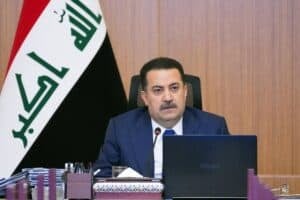Iraqi forces on Sunday advanced on the west bank of Mosul from the south, retaking five villages and marking a new phase in a massive operation launched four months earlier.

The offensive to retake Mosul, the second city and the Islamic State group’s last bastion in the country, is Iraq’s largest military operation in years. Here are some facts:
Where are the Iraqi forces?
Forces led by federal police units have retaken five villages south of Mosul Sunday, including one that leaves them within striking distance of the airport that lies on the city’s southern edge, on the east bank of the Tigris River.
They are backed by the interior ministry’s elite Rapid Response forces and army units.
The Counter-Terrorism Service (CTS), the country’s most seasoned forces, are not involved in this initial assault but are expected to breach the city limits in the coming days.
The Hashed al-Shaabi (Popular Mobilisation) paramilitary forces are active on a southwestern front. They are on the outskirts of the IS-held town of Tal Afar and have cut off the jihadists’ supply lines between Mosul and Syria.
A variety of forces are deployed inside east Mosul, which was completely cleared last month but the Kurdish peshmerga are not in the city, holding their lines a few kilometres (miles) out, to the east and north of Mosul.
What to expect in west Mosul?
The main focus of the latest phase in the Mosul offensive is the airport and a nearby military base.
Iraqi forces will then attempt to punch into the densely populated city’s western side from a number of possible directions, including by throwing pontoon bridges across the river from the east bank they have already retaken.
The battle in west Mosul could be even tougher than on the eastern side, owing to the narrow streets of the Old City that are impassable for many military vehicles and to the presumed higher level of support for the jihadists among the population there.
A US-led coalition supporting the war on IS in Iraq and Syria has dropped more than 10,000 munitions on IS targets since the operation began on October 17. It also has special forces on the ground advising Iraqi fighters.
How are civilians affected?
While some civilians died and others were used as human shields by IS during the offensive on east Mosul, a feared exodus of unprecedented proportions did not happen, with about three quarters of the east bank’s population remaining in their homes during the fighting.
Around 200,000 fled their homes since the Mosul operation was launched and around a fourth of them have already returned.
The aid community has warned however that the push on the west bank could yet trigger mass displacement and relief workers are scrambling to build new camps around Mosul.
It also fears that a protracted siege of holdout jihadists in west Mosul could leave an estimated 750,000 civilians facing starvation there.






